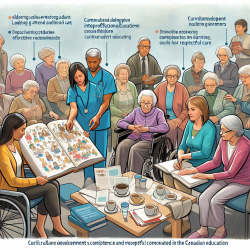As a practitioner deeply committed to enhancing the well-being of children, it's crucial to stay informed about the latest research. A recent study titled "Health-related quality of life among adolescents and young adults with mood and anxiety concerns" provides valuable insights that can significantly impact your practice.
This study, conducted by Kazi, Osuch, Wammes, and John-Baptiste (2023), focuses on adolescents and young adults (AYAs) aged 16 to 25 who are seeking care for mood and anxiety disorders. The findings underscore the importance of timely access to healthcare services and highlight several key factors associated with health-related quality of life (HRQOL) in this population.
Key Findings
- AYAs with mood and anxiety disorders exhibit significantly impaired HRQOL, with mean physical component summary (PCS) and mental component summary (MCS) scores of 43.8 and 19.0, respectively.
- Maternal post-secondary education, depression severity (measured by the Montgomery-Åsberg Depression Rating Scale Self-Report), and functional impairment (measured by the Sheehan Disability Scale) are significantly associated with HRQOL.
Implementing the Findings in Practice
To improve outcomes for children and adolescents with mood and anxiety disorders, consider the following strategies based on the study's findings:
- Early Intervention: Timely access to mental health services is crucial. Implementing early intervention programs can help mitigate the long-term impact of mood and anxiety disorders on HRQOL.
- Parental Involvement: Encourage parental involvement, particularly focusing on maternal education and support. Educate parents about the importance of their role in their child's mental health and provide resources to support them.
- Comprehensive Assessment: Utilize comprehensive assessments that include psychometric measures of symptom severity and functional impairment. This will help tailor interventions to the specific needs of each child.
Encouraging Further Research
While this study provides valuable insights, it also highlights the need for further research. Encouraging ongoing research in this area can help refine our understanding of the factors influencing HRQOL in children with mood and anxiety disorders and improve intervention strategies.
By staying informed and implementing data-driven strategies, you can make a significant difference in the lives of children and adolescents struggling with mood and anxiety disorders.
To read the original research paper, please follow this link: Health-related quality of life among adolescents and young adults with mood and anxiety concerns.










